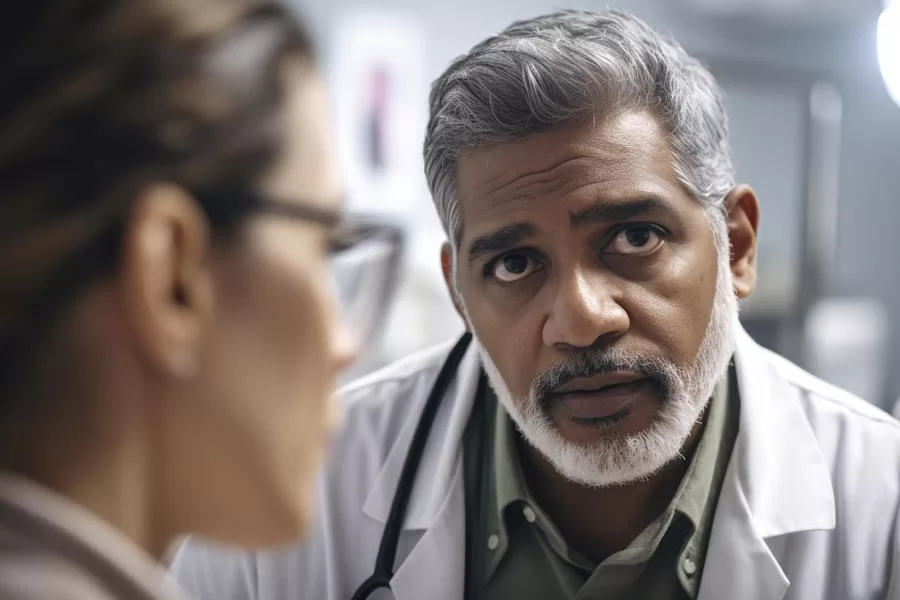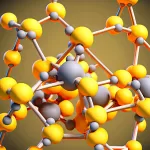
The prostate gland is so small and inconspicuous that men do not pay it much attention until it starts to grow. The fact is that Enlarged Prostate is a normal part of the aging process, and almost every man over 50 experiences it. However, it is accompanied by a number of unpleasant symptoms, some of which are related to urination. Let’s find out more about this situation.
How an Enlarged Prostate Causes Frequent Urination
To understand the connection between these two processes, we have to delve deeper into physiology.
The anatomy of the prostate and urinary system
Prostate gland has a size of a chestnut and is placed just below the bladder and in front of the rectum. The urethra goes from the bladder and right through it. Thus, this tube is utilized both for the flow of urine and semen depending on the situation.
For the same reason, the gland is linked to it. It produces semen and pushes it out through the tube. This action we call ejaculation.
The effect of prostate growth on the urethra
When the size of it becomes bigger, it influences the urinary tract. Thus, it creates additional pressure on its components that are the nearest to it. That is why different kinds of problems and unpleasant symptoms occur.
Urinary retention and bladder overactivity
Due to the tissue growth, urine cannot flow freely. At the same time, the bladder feels the tension and translates it as an urge to pee. Altogether, one experiences this urgency but there is no urine for voiding.
Nocturia: frequent nighttime urination
This situation appears throughout the day. However, especially painful it becomes during the night. A man in this situation forgets about the quality of sleep, as he has to visit the bathroom many times instead of sleeping peacefully. This worsens the quality of daily life also as without proper sleep one becomes irritated and exhausted.
What is an Enlarged Prostate
Why does this situation occur? Let’s find out a bit more about the process itself and its development.
Definition of benign prostatic hyperplasia (BPH)
As far as we have seen, this gland is relatively small but important. It preforms several valuable functions. Due to the aging process, it becomes larger. This is not the same as a tumor growth. That is why the condition is not dangerous to health but provides some unpleasant symptoms.
The process of prostate growth
It usually grows slowly but can reach the size of a lemon. The symptoms are related to physiology of a given patient, as some men do not experience any disturbance while others react even on the tiniest changes.
Common symptoms of BPH
The thoughts about this condition may occur if:
- Urgent urination with higher frequency;
- Nocturia is observed;
- It becomes challenging to start to pee;
- The stream is weak or unstable;
- Afterward leaking is observed;
- There is a feeling of a non-emptied bladder.
Sometimes infections follow, the urine flow totally stops or blood appears in it. Still, such symptoms are less common and, generally, this disease does not provide severe conditions. That is also the reason why men neglect visiting the doctor at once.
Risk factors for developing BPH
According to statists, a major part of men over 50 experiences this process. The main causes are as follows:
- Aging. The growth of the gland is the part of this process. That is why older men have to check up on the gland regularly and do not neglect simple tests.
- Family history. If there were cases among the closest relatives, then the chances grow.
- Diabetes and cardiovascular diseases. There is evidence that patients with these problems more often experience prostate enlargement.
- Excess weight, sedentary life as well as smoking and overuse of alcohol largely contribute to the development of this condition.
Altogether, all these factors are common and that is why the condition is so widespread.
Diagnosis
Nowadays, it is possible to early diagnose this issue and apply treatment in time. On average, every man after 50 has to examine the gland at least once per year.
Medical history and physical examination
The general practitioner should pay attention to the prostate health of all men after 50. For this, he asks a set of questions related to relatives and the urination of the patient.
Digital rectal examination (DRE)
This simple test is done at least once per year. For it, the doctor put the gloved finger inside the rectum to feel the gland from the inside a make a brief conclusion on its size and shape.
Prostate-specific antigen (PSA) test
This blood test is also prescribed annually. If the levels of this protein rise, it is a sign of some problems with the gland that require further diagnostics.
Urinalysis and urine culture
As other diseases may cause similar problems, the physician has to check the urine sample for the microorganisms and signs of inflammation.
Imaging tests: ultrasound and MRI
Ultrasound scans or MRIs are utilized to visualize the gland. In addition, they may be used to have a look on the bladder and on its state.
Urodynamic tests
This examination includes a urine flow test to measure its quantity that flows out during some period of time.
Managing Symptoms
When this condition is diagnosed, the next logical question is what to do with it. Do not worry, the doctor will make a prescription and advise on the required steps.
Lifestyle
In most cases, simple changes can greatly help to decrease the unpleasant symptoms, namely:
- One should drink less before going out or sleeping and care of hydration management throughout the day;
- It is better to avoid bladder irritants such as alcoholic beverages and caffeine-containing drinks;
- To control the urination process, one can utilize special trainings for the bladder and exercising of the muscles of this area;
- It is advisable to prevent or treat constipation if it occurs.
Furthermore, it is better to quit bad habits such as smoking and overconsumption of alcohol. The same goes for obesity and a sedentary lifestyle. The control of weight and regular exercise will help to avoid other issues in the future.
Medications
There are special medicines aiming at stopping the growth, shrinking the gland and relaxing muscles to improve urine flow. Among them are alpha-blockers, 5-alpha reductase inhibitors and phosphodiesterase-5 inhibitors. However, all of them are prescribed by the doctor according to the results of the analysis and the condition of the patient.
Minimally invasive procedures
The following procedures may be prescribed if the gland is too large:
- Transurethral microwave thermotherapy;
- Transurethral needle ablation;
- Prostatic urethral lift.
They are aimed at widening the urethra or destroying a part of the gland. The modern equipment allows to do them quickly and without involvement of other tissues and organs.
Surgical interventions
When the condition is severe and the gland has grown too much, the doctor may advise a surgical solution to the problem. It can be done in one of the following ways:
- Transurethral resection;
- Holmium laser enucleation;
- Simple prostatectomy.
During these procedures, some parts or all tissues are removed. A man can further live a normal life without it. He will just require a recovery period and special treatment.
Summary
To conclude, there is no need to be scared of this condition. Of course, it is unpleasant but modern medicine easily cures this condition especially in the early stages. Therefore, do not neglect regular examinations and live a healthy life.
FAQ
There are special medicines that a general practitioner will prescribe you to eliminate this problem.
On average, men pee from seven to eight times per day. When this number is significantly increased, up to every 30 minutes or an hour, which may be a sign of an enlarged gland.
Yes, if it is growing in size.
They include the frequent urge for visiting WC, difficulties while peeing, the feeling of full bladder afterward, leakage of the urine and more often awakenings at night to visit the toilet.
That is because of an additional pressure created by the new tissue. It influences both the urethra and the bladder and disturbs their normal work.







